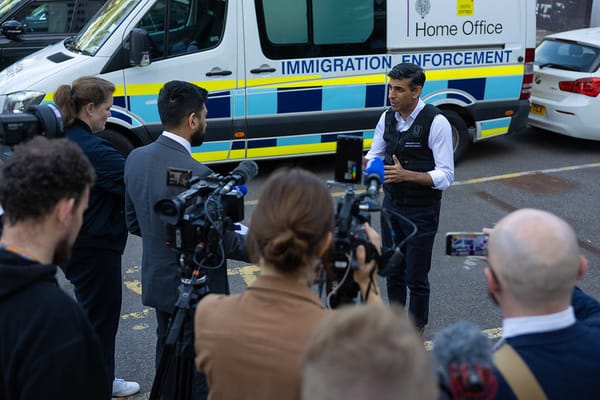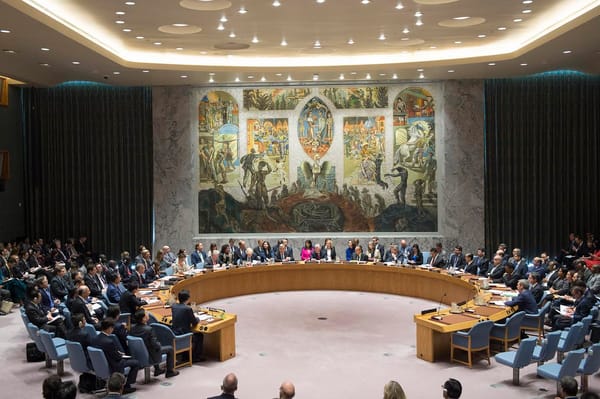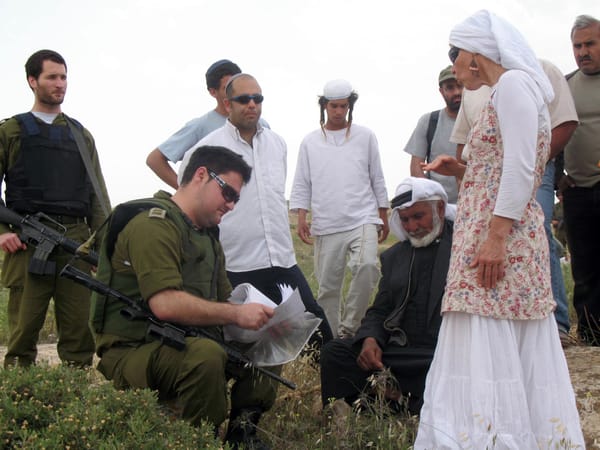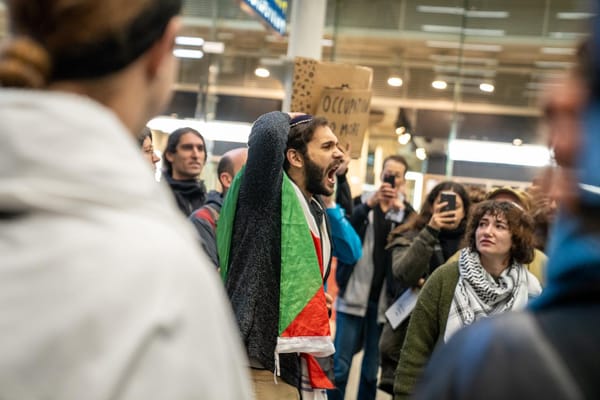Mizrahi stories take centre stage
Victor Esses tells Vashti how his new show is pushing back against Ashkenormativity in the industry.
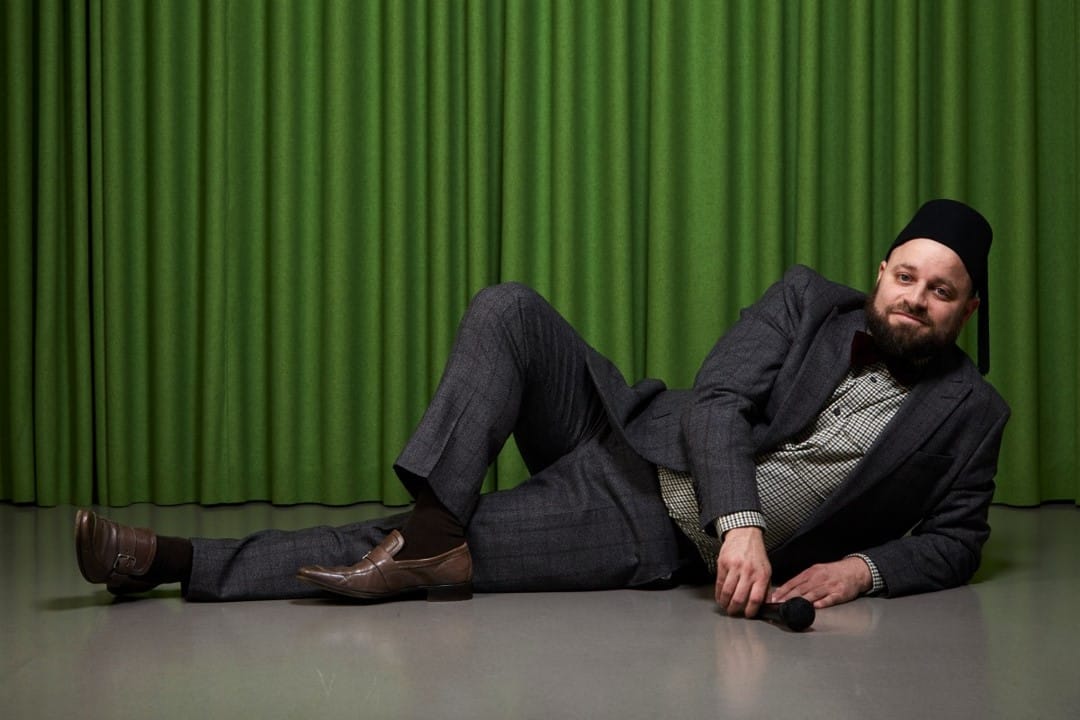
I first met theatremaker Victor Esses via our mutual friend, the actor and writer Philip Arditti. It was around the time that a lot of conversations were happening between Jewish theatremakers because of the controversies around “Jewface” and the Royal Court. Since many of those conversations were Ashkenormative, we decided to start one of our own; Esses is Lebanese-Jewish and Latinx Brazilian, Arditti is Turkish-Jewish from Istanbul, and I am second-generation Iraqi-Jewish. We had some very fun and frank conversations about being Mizrahi (or whatever we call ourselves) in London, making theatre from the margins, getting past gatekeepers and the vexed and vexing question of what is authentic.
Recently, I got to see Esses’s new show The Death & Life of All of Us at the Soho Theatre. It was exhilarating to see a Lebanese-Jewish story on stage: exhilarating because it’s a story you don’t see very often in the UK, and exhilarating for me in particular because of its echoes with the stories of my own family. Esses’s father left Beirut in 1967, after the six-day war, when tensions were building for Lebanese Jews; his mother left in 1975, when the civil war broke out, and the Jewish area, Wadi Abu Jamil, was at the epicentre of the violence.
But The Death & Life of All of Us is about Esses tracking down his long-lost great-aunt Marcelle, who had left Lebanon for Italy where she’d converted to Christianity and kept her origins a secret. The show mixes video footage from a trip Esses made to Rome to meet Marcelle when he was 19, with storytelling, music (courtesy of Italian composer and performer Enrico Aurigemma) and movement (which he worked on with Latinx British-Bolivian theatremaker and movement director Jenni Jackson).
It’s a show that asks, “Can we live authentically without hurting ourselves — or someone else?” It makes you feel curious and excited about identity and exploration, and has at its heart a warm and joyful relationship between two exuberant outsiders from two different generations of one family. Ahead of the show’s opening at the Edinburgh Festival Fringe this week, I met with Esses to talk about how he came to make it. Our conversation has been edited for length and clarity.

Samantha Ellis: How do you define yourself as an artist? Do you say Brazilian? Arab-Jewish? Sephardi? Mizrahi?
Victor Esses: I usually say I’m a Jewish, Lebanese, Brazilian, queer man – when I have to put the labels on. I grew up with Lebanese culture. My parents spoke Arabic. I went to Jewish school, and to synagogue every Shabbat.
Growing up in Brazil, the word Mizrahi wasn’t something I heard. At home, we called ourselves Sephardi. To me, Mizrahi means Jews who were in the Middle East the whole time, and Sephardi means people who moved there from Spain and Portugal [after the Inquisition], but I don’t think it’s that clear for most; we’re all mixed up. I certainly have both in my family history. Half my grandparents are from Syria and half from Lebanon. We also found out we have people in our family tree from Lithuania, who went to Beirut in the 1800s.
So you have a bit of Ashkenazi too!
Yeah! How do you identify?
I’m not sure about Mizrahi because it’s just the Hebrew word for “Eastern” and it feels like a big lump. So, I say Iraqi-Jewish.
I wonder if Mizrahi is a bit like the word queer, where it used to be derogatory and then you reappropriate it and it becomes part of you.
Yes! People have even said to me, if I’m writing a Jewish character: “Could they just be Jewish or Iraqi?” As if they’re two separate things. And what they mean is, “Could they be Ashkenazi?” Because that’s what they understand a Jewish person to be. Have you encountered that?
I’ve been in Jewish groups where I’ve felt a connection, but also those where I’ve felt apart. It hasn’t always felt like there’s been enough effort [from other Jewish theatremakers] to say, “OK, Mizrahi history is a bit different so let’s make sure we’re not just supporting what we immediately relate to.”

Is The Death & Life of All of Us the most bang-on-your-identity show you’ve made?
My show Where to Belong [produced in 2021] was about being all this multitude of things – Jewish, Lebanese, Brazilian, queer – talking about migration and my mother being a refugee of the war and ending up in Brazil, me ending up in London because of being queer, and all these journeys we make. This one explores my identity from a different place.
And this show started in your twenties, so it has very deep roots?
Yes. I grew up in a very tight-knit community. The Jewish Syrian-Lebanese community in São Paulo has one narrative: we all need to be straight, get married, work in a business and make lots of money. But growing up I didn’t fancy girls, I was creative and I liked wearing designer clothing.
In my teens, my grandma told me about this sister of hers I’d never heard about, who was in Rome and was very fancy. She was a member of a golf club, her husband was a diplomat, and she was not Jewish anymore. That was very interesting to me.
Interesting to you because she had shed a part of her identity?
Because she changed. She had come from my community, something that felt so specific and near-impossible to leave, and had created a whole different life. And the fancy part too. Because I was feeling bad about myself, and I wanted to be a better version of myself. And I thought maybe she would be more worldly than everyone I knew. I was curious about her being an outsider.
And you went to see her in Rome and filmed her – the footage is in the show.
When I came to London to study film, I wanted to create something about her. There was a story there. So I filmed her, talked to her for five hours on tape, had some brilliant and some challenging times…
Went on a golf cart…
I never saw her play golf! [Laughs] Only to a party at the golf club.
I felt this connection: we both wanted to do something different. I’d also moved countries and was studying film and trying to become an artist.
But you didn’t make a show for a few years after that.
I’ve always been scared of looking at that material – what could I do with it? But I got to a point where I said to myself: I love this woman, I sometimes found her very annoying and difficult, but I can embrace all of that.

Tell me about the scene where you’re wearing a tarboosh and you’re dancing to a mix of Middle Eastern and Western music. I loved how joyous it was, that synthesis of your identities.
Music from North Africa and the Middle East is in my bones. I feel its history in me. I wanted to dance to it in the show, and to try to keep up with it, but without managing because it’s exhausting. And then it also became about how dancing is a joy, it’s freedom, queer freedom.
Do you think you’ll continue to explore your Lebanese-Jewish identity?
I think so. When I came [to London] in 2000 and I was thinking about which stories to tell, a lot of people were talking about universality, which meant work that was white, Western, straight, and it was insane – like, we are all different and supposedly can all relate to this one experience, but why could we not relate to other people? So firstly by making Where to Belong, I felt how empowering it was to claim all of those identities in one place, and not have to split myself, which led to this piece.
Can we talk about gatekeeping? Have you found it hard to persuade producers, theatres and funders that there will be an audience for this work, that it’s not too specific or niche?
That was a challenge. I think there are always ways of making space for the most marginalised voices if gatekeepers want to try, if they really want to make sure we have more migrant artists and queer artists and people of colour and working-class people. In a Jewish context, it feels to me that it’s about making that extra effort to include those of us with a history in the Middle East, North Africa or other parts of Asia and the world, or even who are European but Sephardi, or Jews of colour.
I think gatekeepers can always find those people if they look hard, and if they make the extra effort to nurture them and support the development of their work. From our side, I think it takes a lot of persistent tapping on doors to get inside.
More like banging!
Yes! [Laughs] And insisting these stories are worth telling. And it helps that we’ve reached a place where we are talking about migration more, and intersectionality.
And when you make this work, do you find that audiences connect? I find they connect much more than you might think.
Absolutely. It’s a preoccupation of my process to make the work as universal as possible. With Where to Belong, [the idea was that] we can all be made to move countries overnight and become migrants or refugees. With The Death & Life of All of Us, it is all about that intergenerational connection and the image we put out to the world versus who we really are. It’s about making people feel comfortable to talk about difficult things in a warm and welcoming way; a chance to consider the complexities without giving all the answers.
Opening a conversation?
Yes. And seeing a different subjectivity of Jewishness to the ones we’re used to seeing. To those who feel like me, I’m saying let’s get more interested in our own unique lives and histories, then slowly we can make our own spaces in the world. Because as Mizrahi/Sephardi/Arab Jews, even in the Jewish community there’s often not enough thought for us. And I’m saying let’s write more, make more art, be more visible, tell more stories.▼
The Death & Life of All of Us will be at Summerhall, Edinburgh, between 2-27 August. Tickets are available here.
Samantha Ellis is an Iraqi-Jewish writer of plays and books.

